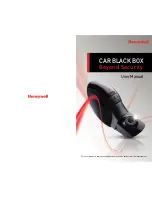
1. INTRODUCTION
CQR
’s Carbon Monoxide Detector is effective for
detecting a build-up of carbon monoxide, also known as
CO gas, in your home or business. It is easy to install
and allows connection to a fire control panel or security
system.
(1) Monitors for carbon monoxide in a continuous
manner.
(2) Gives a loud alarm (85dB) when it detects a
build-up of carbon monoxide.
(3) Self-test its operative functions continuously
(4) Offers a 2 year warranty for the carbon monoxide
sensing unit.
(5) Meets the requirements of EN 50291 for sensitivity.
2. POSSIBLE SYMPTOMS OF CARBON
MONOXIDE POSIONING
Carbon monoxide is colourless, odourless, tasteless, and
very toxic. When inhaled, it produces an effect know as
chemical asphyxiation. Injury is due to the combining of
CO with the available hemoglobin in the blood, lowering
the oxygen-carrying capacity of the blood. In the
presence of CO gas, the body is quickly affected by
oxygen starvation.
The following symptoms are relayed to CO poisoning
and should be discussed with all members of the
household so that you know what to look for:
(a) Extreme exposure: unconsciousness, convulsions,
cardio respiratory failure, death
(b) Medium exposure: severe throbbing headache,
drowsiness, confusion, vomiting, fast heart rate
(c) Mild exposure: slight headache, nausea, fatigue
(similar to
“flu-like” symptoms)
Young children and household pets may be the first
affected. Exposure during sleep is particularly dangerous,
because the victim usually does not awaken.
3. LOCATIONS TO INSTALL YOUR DETECTOR
Since CO gas moves freely in
the air, the suggested
location is in or as near as
possible to sleeping areas of
the home. The human body is
most vulnerable to the effects
of CO gas during sleeping
hours. For maximum
protection, a CO detector
should be located outside primary sleeping areas or on
each level of your home. In the adjacent figure are
suggested locations in the home. The electronic sensor
detects carbon monoxide, measures the concentration
and sounds a loud alarm before a potentially harmful
level is reached.
Do not place the detector in the following areas:
(a) where the temperature may drop below 4.4
℃
or
exceeds 40
℃.
(b) Near paint thinner fumes
(c) Within 1.5 meters of open flame appliances such as
furnaces, stoves and fireplaces
(d) In exhaust streams from gas engines, vents, flues
or chimneys
(e) Do not place in close proximity to an automobile
exhaust pipe; this will damage the detector.
4. INSTALLING THE BASE OF DETECTOR
(1) All the wires in the base should be flattened and
should not touch any of the other connectors to
ensure that the detector head is smoothly secured to
the base.
(2) When using the jump wires to check the
connectivity for each gas detector in the circuit loop,
be sure to remove all the jump wires before
attaching the detector head onto the base.
5. WIRING DIAGRAM FOR CQR-983 SERIES
CARBON MONOXIDE DETECTORS
6. CHANGING THE RELAY
The relay is located in the detector head, the default
setting is NC (Normally Closed) to change the relay
output of the unit use the following procedure:
(1) Remove the screws from under the connections
label on the back of the detector head
(2) Remove the front cover to expose the PCB.
(3) Remove the jumper above the relay as indicated in
fig 3.
(4) Place on the required setting NO or NC
(5) Carefully replace the cover.
(6) Refit the screws
CARBON MONOXIDE DETECTOR
CQR-983 SERIES USER
’S MANUAL
Figure 3.
-
Ve
2
3
E
ND
O
F
DE
V
ICE
2
3
NO NC
Reed Switch
N/O
N/C
Reed Switch
Relay
LED




















